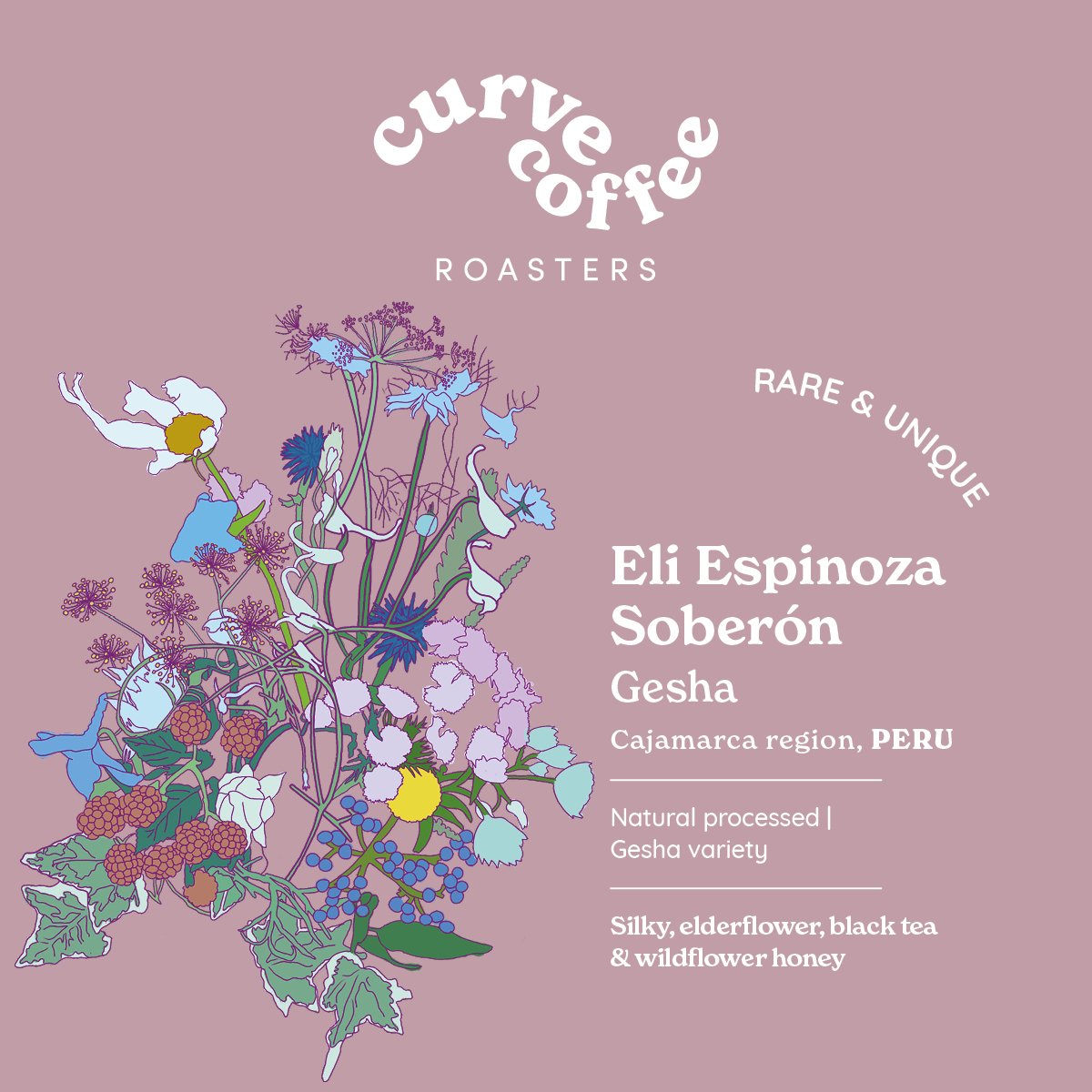DECAF FEATURE FILTER | Villamaría Pink Bourbon | Colombia
DECAF FEATURE FILTER | Villamaría Pink Bourbon | Colombia
For best results we would always recommend purchasing whole bean and grinding fresh before brewing. You can find great grinder options on our webshop.
If you don't have a grinder, we can grind according to your preferred brewing method just before shipping.
We’ve been wanting to add a juicier, fruitier decaf to our offering for a while, one that will work well for filter brewing methods and offer the kind of experience we love in the rest of our Feature Filter range. We’re delighted to share with you this awesome Pink Bourbon from the Villamaria community, processed using the “water pillow” anoxic washed method. Bringing in all the tasty sweet fruits without the caffeine. The perfect afternoon brew.
Great for filter coffee brewing using V60 and other drip filter methods, Aeropress, Clever Dripper and cafetière. Best enjoyed black.
SHIPPING & DISPATCH:
Our e-commerce orders are shipped Mon - Thu. Same day dispatch cut off is 12pm Mon - Wed and 3pm Thursday. Orders places after 3pm on Thursday are dispatched on Monday.
Key origin info:
Producer: Grown and harvested by small-holder producers from the Villamaría area, centrally processed at La Jamaica station operated by Raw Material
Region: Municipality of Villamaría, Caldas Department
Altitude: 1400 - 2000 masl
Varietal: Pink Bourbon
Process: “Anoxic washed” processed & “sugarcane” decaffeinated; the cherries are initially fermented for 48 hours, submerged in water under a “water pillow” (sheet with water on top) before being de-pulped, fermented to loosen mucilage, washed and dried
Exporter & Importer: Raw Material
Cup profile: Juicy, pommegranate & wine gums
About Villamaría Pink Bourbon Decaf:
This exceptional coffee takes its name from the Villamaría municipality - home to the growers who contributed their Pink Bourbon coffee cherries to this lot.
The Pink Bourbon seedlings were initially propagated by Raw Material (our export partner) at their main farm and educational facility El Fenix, and distributed to producers who then sell their harvested cherry to be centrally processed at the local La Jamaica station operated by the Raw Material team. This is with the goal of generating additional value for growers through variety selection and specialised processing whilst minimising the necessary investment and risk posed by experimental processing. The cherries for this lot were first fermented using a “water pillow anoxic” method before being de-pulped, washed and dried.
The seedlings were provided to producers at no cost, grown in Raw Material’s seedling nursery at El Fénix and transported from Quindío to Caldas. The resulting Pink Bourbon cherries generate a higher price for the producer, with the anoxic processing methods providing an additional increase cup quality.
The water pillow technique was developed by Miguel (head of RM’s El Fenix) and involves using a sheet of plastic that is put on top of the coffee cherries in a tank or a tub and over which more water is poured forming a seal and creating low-oxygen (anoxic) environment in which the initial fermentation takes places. The water serves two functions. Firstly, it creates the anoxic fermentation environment by pushing the plastic sheet down onto the coffee and reducing access for fresh oxygen. It also acts as a heat sink, to draw heat away from the fermentation happening below. The heat sink is a crucial function, syphoning off the heat generated during fermentation. This helps lower the risk of developing off flavours, such as vinegary acidity or strong savoury notes, which are often common in longer fermented coffees. A nice by-product is that it can also prolong a coffee’s shelf life.
As Raw Material explain:
The core of our approach at Raw Material is based on the concept of achieving maximum impact for minimum input and the Water Pillow technique is rooted in this. It is a method which uses easy to procure materials to achieve both an anoxic fermentation environment, and a measure of temperature control for the fermentation process. The method uses three basic materials; a tub, water, and plastic sheeting. It is so startlingly simple that it can be practiced in remote or under resourced growing regions with relative ease.
And finally, the coffee was decaffeinated at the nearby Descafecol plant using the “sugarcane” method. And the result? A deliciously juicy fruit-forward brew without the caffeine!
About the “Sugarcane” decaffeination process
Also known as E.A. - “ethyl acetate” decaffeination is a natural process that not only maintains great integrity of green-coffee flavour, but also allows us to offer a decaffeinated coffee that best supports a vertical supply chain. This is due to the fact that the growing, processing, and even the full decaffeination process all happens at the source in Colombia, meaning all value added by these processes stays within the country of origin and its communities.
How does it work:
The washed and dried green coffee is received at the decaffeination plant and it is steamed for approx. 30 minutes. A low-pressure steaming process opens the pores of the coffee, allowing for caffeine extraction.
Coffee is placed in a solution of water and Ethyl Acetate (E.A.), a naturally occuring compound and solvent derived through the fermentation of sugarcane. While submerged in the solvent, E.A. naturally bonds to the salts of chlorogenic acids within the coffee, allowing for the extraction of caffeine.
Once the solvent is saturated, the tank is drained and fresh solution is introduced. This continues for about 8 hours.
After the last of the caffeine has been extracted, the coffee is removed from the solution and prepped for another steaming. The final low-pressure steaming removes the remaining traces of E.A.
Decaffeinated coffee is then dried, physically polished to ensure cleanliness, and packaged for export.









